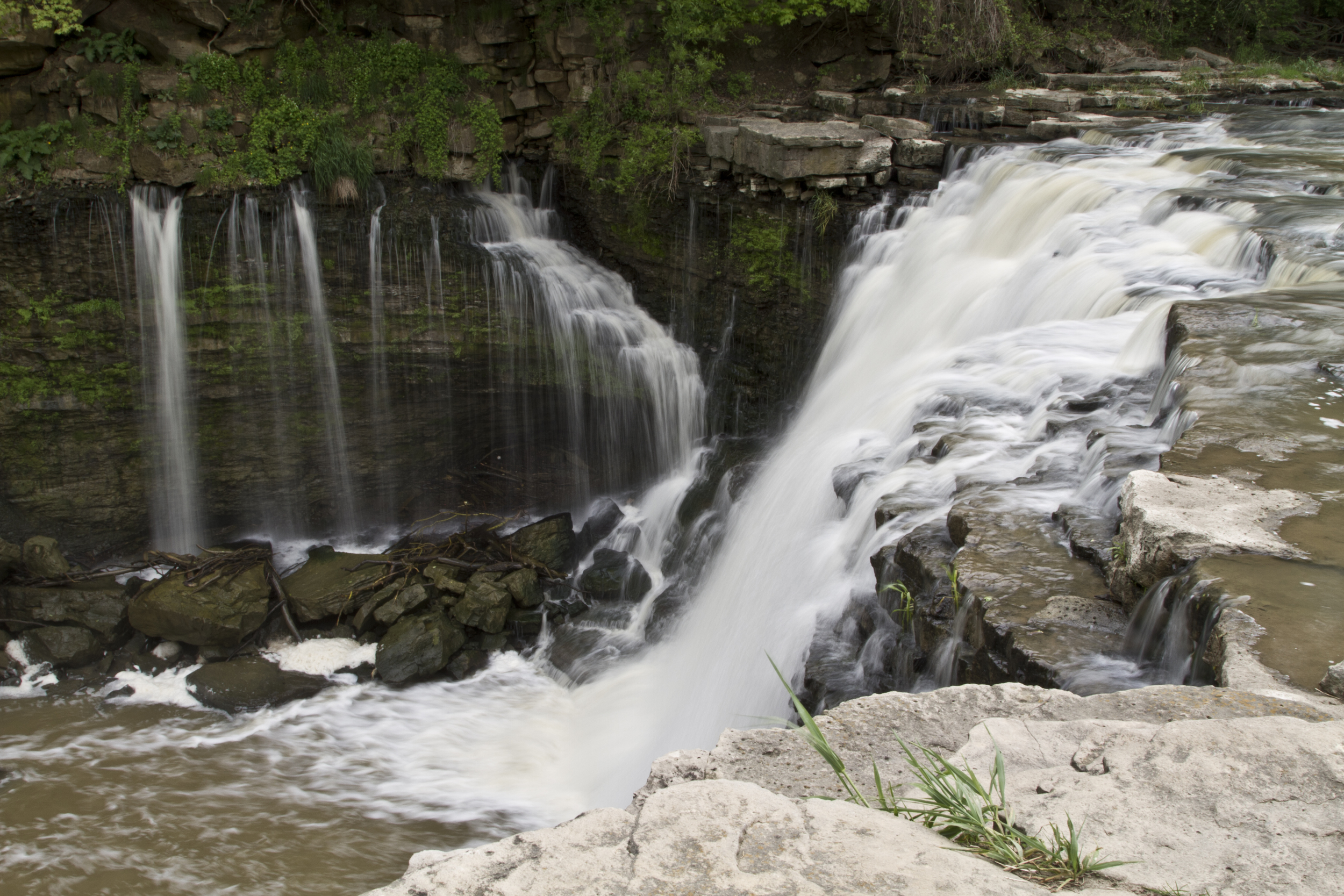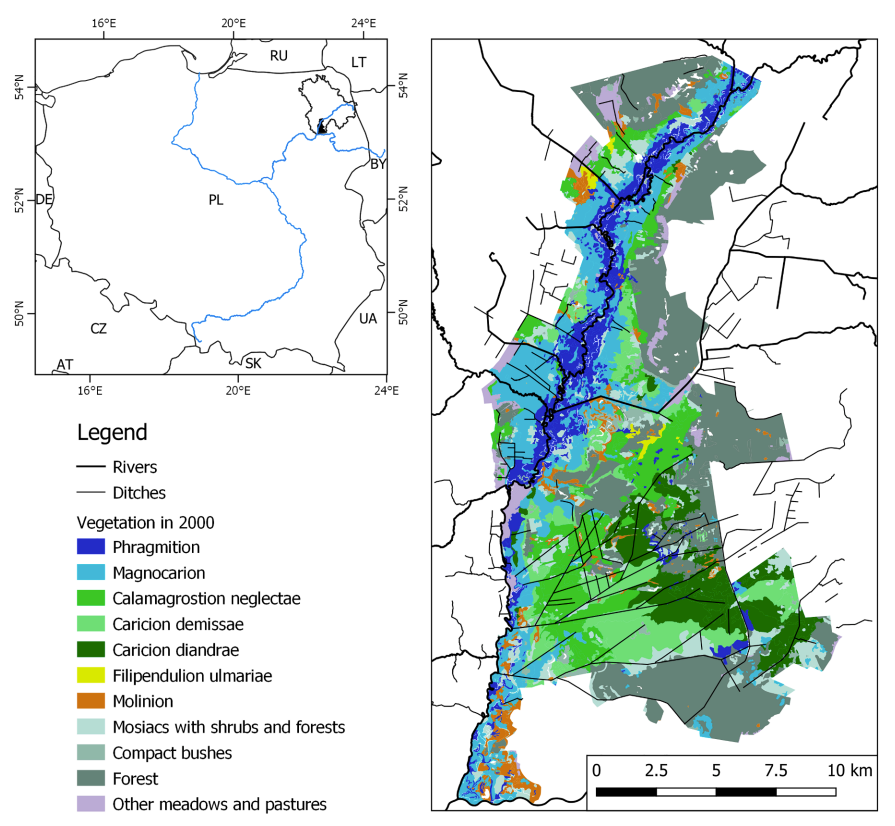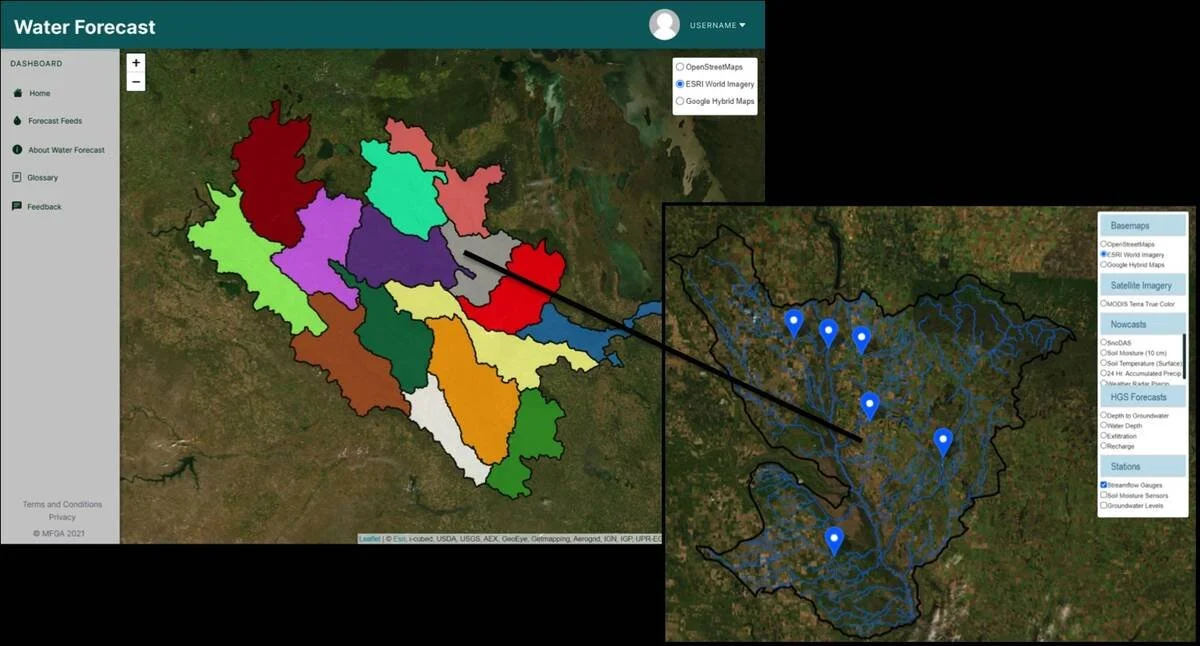

HGS RESEARCH HIGHLIGHT - Natural and anthropogenic drivers of the water table dynamics in a riparian fen peatland
This publication, co-authored by Adrien Renaud, Claude Mügler, Véronique Durand, and Marc Pessel, which examines the natural and anthropogenic drivers of water table dynamics in a riparian fen peatland along the Essonne River in France. This study leverages HydroGeoSphere (HGS) to couple surface and subsurface hydrology, providing new insights into how precipitation seasonality, vegetation activity, and river regulation influence peatland water levels.

HGS RESEARCH HIGHLIGHT - Using water sources extent during inundation as a reliable predictor for vegetation zonation in a natural wetland floodplain
We’re pleased to highlight this publication, co-authored by Tomasz Berezowski and Martin Wassen, which investigates how the extent of water sources during inundation can be used as reliable predictors of vegetation zonation in wetland floodplains. This study leverages HydroGeoSphere (HGS) together with the Hydraulic Mixing-Cell (HMC) method to address long-standing challenges in modelling vegetation dynamics by explicitly accounting for the spatial distribution of different water sources during floods.

Manitoba Forage and Grasslands Association wins Water Canada innovation award
We’re proud to share that the Manitoba Forage and Grassland Association (MFGA) has been awarded the 2025 Early Adopter/Innovation Partnership Award from Water Canada for its pioneering work with Aquanty on hydrologic modelling in Manitoba.
The award recognizes outstanding collaborations that advance Manitoba and Canada’s water sector through innovation and partnership. MFGA earned this recognition for its leadership in applying Aquanty’s HydroGeoSphere-based modelling platform to better understand and manage water resources across agricultural landscapes.

HydroSphereAI — Aquanty’s Artificial Intelligence Platform — has won the Water Canada New Tech Award for 2025.
Aquanty is proud to announce that our latest innovation — HydroSphereAI — has won the New Tech Award at the 2025 Water Canada Awards.

Staff Research Highlight - Quantifying the potential of using Soil Moisture Active Passive (SMAP) soil moisture variability to predict subsurface water dynamics
Aquanty staff investigate the potential for using near-surface soil moisture measurements from the Soil Moisture Active Passive (SMAP) satellite to predict subsurface soil moisture and groundwater storage dynamics. This research offers valuable insights into how satellite-based soil moisture data can inform large-scale hydrological modelling and support more effective water resource management.

Staff Research Highlight - Understanding topography-driven groundwater flow using fully-coupled surface-water and groundwater modeling
This research focuses on understanding the dynamics of topography-driven groundwater flow systems using fully-coupled surface–subsurface hydrologic modelling. This study addresses long-standing challenges in representing nested flow systems by simulating interactions between climate, topography, and groundwater without relying on potentially unrealistic, static boundary conditions.

Staff Research Highlight - Application of Different Weighting Schemes and Stochastic Simulations to Parameterization Processes Considering Observation Error
In this paper co-authored by Aquanty personnel, researchers explore how different weighting schemes and stochastic simulations can enhance the accuracy of parameter estimation processes, ultimately reducing uncertainty in climate change impact assessments.

HydroSphereAI Selected as Finalist for New Tech Award - Water Canada Awards
Aquanty Inc. is proud to announce that we have once again been selected as a finalist for the New Tech Award at the 2025 Water Canada Awards for our cutting-edge, machine-learning-based streamflow forecasting system, HydroSphereAI.

Staff Research Highlight - A Continuous Differentiable Formulation for Seepage Face Boundary Conditions in Dynamic Groundwater Systems
This research by Aquanty staff introduces a continuously differentiable formulation for seepage face boundary conditions in dynamic groundwater systems. Traditional approaches often model seepage faces with abrupt boundary transitions, leading to numerical instabilities, convergence issues, and computational inefficiencies in transient groundwater simulations. This research presents a novel approach that ensures smooth transitions between saturated and unsaturated zones, improving the stability and accuracy of numerical groundwater models.

Manitoba Cooperator - Farm climate adaptation on tap with MFGA project
The Manitoba Co-operator has featured the latest MFGA initiative, with comments from Dr. Steve Frey, Aquanty’s Director of Research Services, highlighting how advanced modelling is supporting more climate-resilient farming in Manitoba. The new project “Evaluating climate change impacts on Manitoba’s forage and grassland landscapes” will build on the MFGA Aquanty hydrologic model to simulate how changing climate conditions could impact water availability, land use, and agricultural sustainability across the Pembina Valley and Assiniboine West Watershed Districts.
